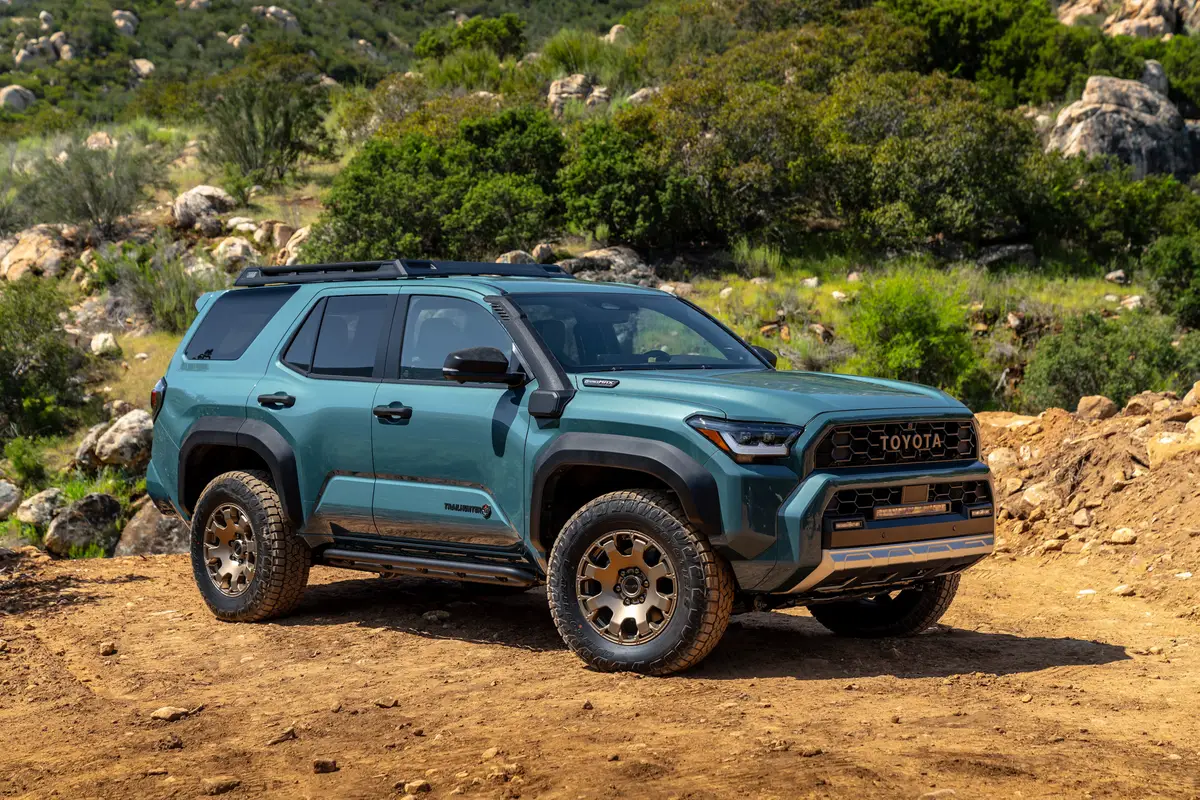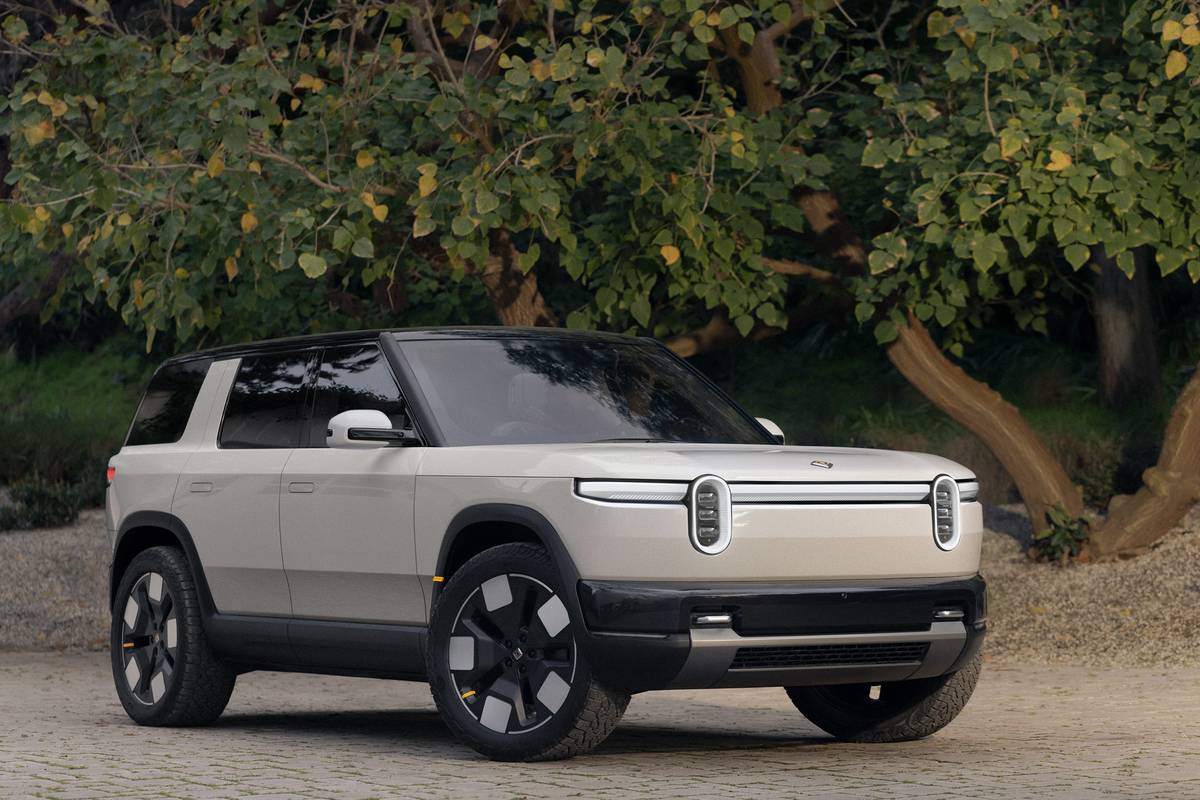The Morning Call and Mcall.com's view
‘Tis the season of holiday shopping, carol singing, holly and if you can’t be jolly about winter approaching at least you can give thoughts to four-wheel drive vehicles.
Although four-wheel-drive vehicles are used year around, they achieve their greatest popularity, and visibility, when the going gets tough.
Snow, slush, sleet and ice are not everybody’s idea of a winter wonderland. Most drivers prefer to experience such scenes by observing them on Christmas cards. But hard-core four-wheel-drive owners actually seem to enjoy all of this stuff.
But even when four-wheel drive isn’t needed, four-wheel-drive vehicles, especially utility vehicles, can add a slightly different dimension to driving. Besides being practical for traveling and hauling, they can also be fun.
The name synonymous with four-wheeling is, of course, Jeep, which got its start even before World War II as a military vehicle. It has been a long time since the first Jeep (General Purpose vehicle) hit the dusty trail back in 1939. The Jeep just kept moving along even though manufacturer ownership was changed several times. The latest move was last year when Chrysler Corp. bought out American Motors. So far Chrysler has kept its corporate hands off of Jeep (as far as the vehicles go), which is probably a wise move.
Anyway, the test vehicle (supplied by Shoemaker Eagle-Jeep, 4131 Walbert Ave., South Whitehall) was a sharp-looking Cherokee Sport, a specialty model for the growing younger market – those in their early 30s, single or just married – but really can be enjoyed by anyone.
The two-door Sport was introduced in early 1988 and can be identified by its unique exterior graphics, striping and 10-hole aluminum wheels. It comes equipped with the 4.0-liter in-line six engine, a five-speed manual transmission (the test vehicle had the optional four-speed automatic), power steering, floor carpeting and P225/ 75R15 tires. It alsohas its own colors and the test vehicle had the brightest of them all, Colorado Red.
The Sport is unmistakably Jeep in appearance. Basic dimensions for this compact utility vehicle include a wheelbase of 101.4 inches, length of 165.3 inches, width of 70.5 inches, height of 66.3 inches and curb weight of 3,080 pounds. The Sport can accommodate five passengers in comfort and/or a lot of cargo. With the rear seat in place usable cargo volume measures 35.7 cubic feet. With the seat folded, cargo volume increases to 71.8 cubic feet.
The test vehicle proved to be very easy to drive. Just place it in gear, hit the accelerator and away you go. If you don’t watch it though, you may go away a little faster than you had planned. This shouldn’t come as a surprise, since the big engine – 4 liters or 242 cubic inches – cranks out lots of power: 177 horses at 4,500 rpm and 224 foot pounds torque at 2,500 rpm.
This overhead valve, fuel-injected engine is an updated ve rsion of the straight sixes used many years by American Motors and is a real torquer, a very desirable characteristic for a four-wheel drive vehicle. Punch it and it will take the Sport from 0-60 mph in less than 10 seconds. Also, the engine increases the vehicle’s maximum trailer-tow capacity to 5,000 rpm.
And with everything considered, fuel mileage proved to be quite decent. The test vehicle averaged 15 miles per gallon for city driving and 22 mpg over the highway.
The four-speed automatic doesn’t take a lot of thought to operate. Most times it can just be left in Drive. If a little extra is needed for towing or holding back on a mountain, Three can be used. And if things really get rough, there’s always Low with first and second gear.
The transmission has both ”Power” and ”Comfort” modes. In the power mode, the transmission will upshift at a higher engine rpm, downshift more rapidly and be more sensitive to the throttle position. The comfort mo e provides normal operation conditions with a more conservative and economical shift schedule. Very easy to operate, just push the rocker switch in the mode you want and it does all the thinking and work.
Also not requiring a lot of gray matter is the part-time four-wheel-drive selector system. This is a shift-on-the-fly unit that won’t tax the mechanical ability of anyone. It can be shifted back and forth from two to four-wheel high while moving. In and out of four-wheel low does require a stop but no big deal.
A four-wheel drive system does put a lot of weight under the vehicle but the test vehicle acted like a passenger car on the highway. The ride was easy, or let’s say a lot easier than one would expect from this type of vehicle. The suspension features a coil spring live axle with leading kinks track bar up front; leaf springs mounted above the axle in the rear; front and rear stabilizer bars, and a steering damper. Nothing complicated but very rugged.
A new feature available for ’89, though not equipped on the test vehicle, is an Anti-Lock Brake System (ABS), which Jeep claims is the first such system available in the light truck industry. Unlike other anti-lock brake controls currently available on cars and trucks with part-time or full-time four-wheel- drive systems, according to Jeep, this system will operate in either two- wheel or four-wheel driving modes.
Designed by Bendix, the new anti-lock brakes will be optionally available on Jeep Cherokee and Wagoneer models equipped with the 4-liter engine and Selec-Trac full-time four-wheel-drive system. By preventing brake lock-up, ABS (Jeep’s or any other system) will reduce stopping distances, improve vehicle stability in braking situations and enhance the driver’s ability to maneuver the vehicle in extreme or potential wheel lock-up situations. Certainly an option worth looking into.
Base price on the four-wheel-drive Cherokee two-door is $13,657. The test vehicle had a bottom line of $18,002, which certainly is getting up there but is not out of line with the competition. Options included the Sports Package, $945; air conditioning, $820; four-speed automatic, $795; visibility group, $281; gauge group, $155; rear window washer/wiper, $144, and conventional spare, $215. The destination charge is $435.
The Jeep now shares the same warranties as other Chrysler Corp. vehicles. There is the 7-year/70,000-mile power train warranty, 7-year/100,000-mile corrosion warranty and 12-month/12,000-mile basic vehicle warranty.
Latest news



